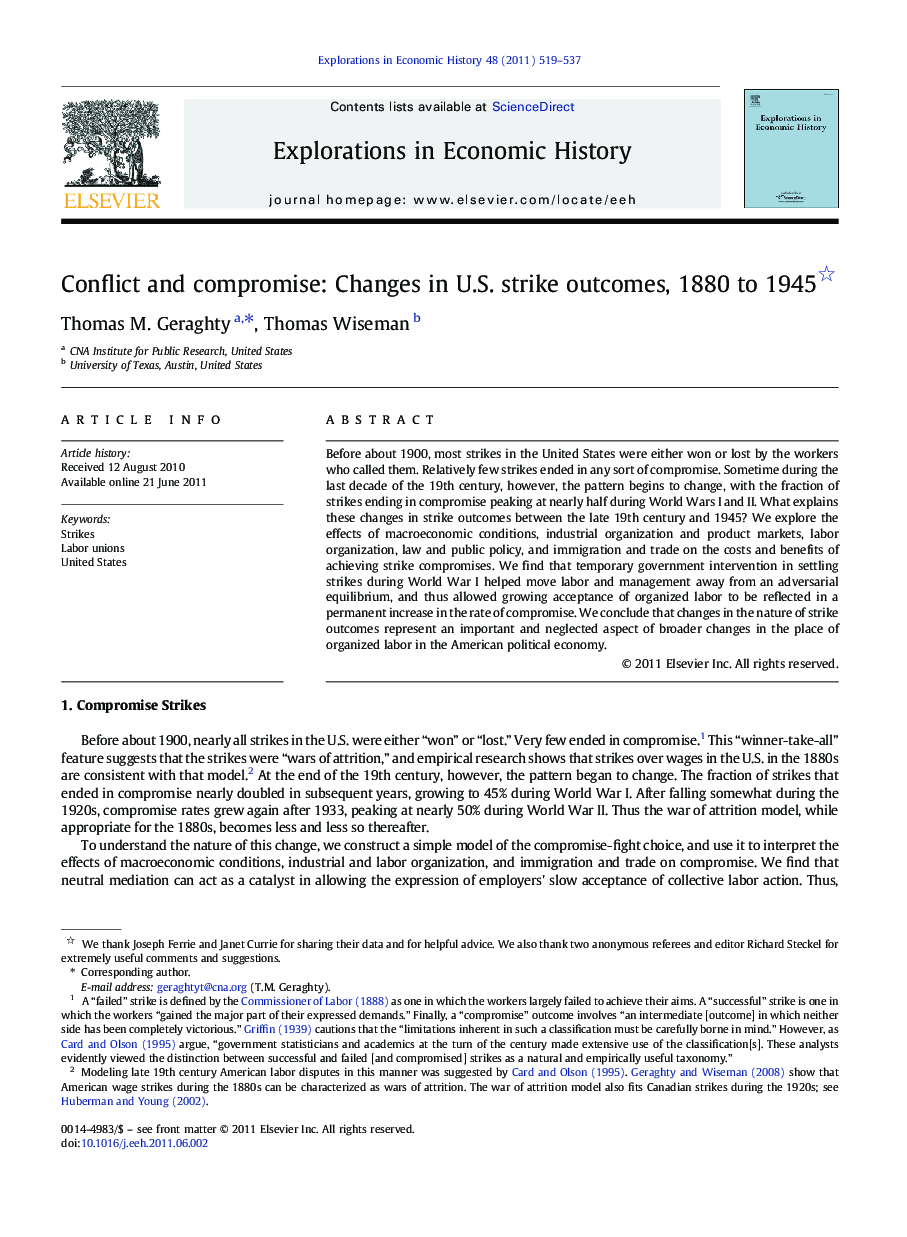| کد مقاله | کد نشریه | سال انتشار | مقاله انگلیسی | نسخه تمام متن |
|---|---|---|---|---|
| 5068825 | 1373011 | 2011 | 19 صفحه PDF | دانلود رایگان |

Before about 1900, most strikes in the United States were either won or lost by the workers who called them. Relatively few strikes ended in any sort of compromise. Sometime during the last decade of the 19th century, however, the pattern begins to change, with the fraction of strikes ending in compromise peaking at nearly half during World Wars I and II. What explains these changes in strike outcomes between the late 19th century and 1945? We explore the effects of macroeconomic conditions, industrial organization and product markets, labor organization, law and public policy, and immigration and trade on the costs and benefits of achieving strike compromises. We find that temporary government intervention in settling strikes during World War I helped move labor and management away from an adversarial equilibrium, and thus allowed growing acceptance of organized labor to be reflected in a permanent increase in the rate of compromise. We conclude that changes in the nature of strike outcomes represent an important and neglected aspect of broader changes in the place of organized labor in the American political economy.
⺠We trace the increase in the fraction of strikes that end in compromise in the U.S. from 1880 to 1945. ⺠The rate increased from 10% to 50%. ⺠We explore macroeconomic conditions, industrial and labor organization, and public policy. ⺠Temporary government intervention during WWI led to a permanent increase in the compromise rate.
Journal: Explorations in Economic History - Volume 48, Issue 4, December 2011, Pages 519-537